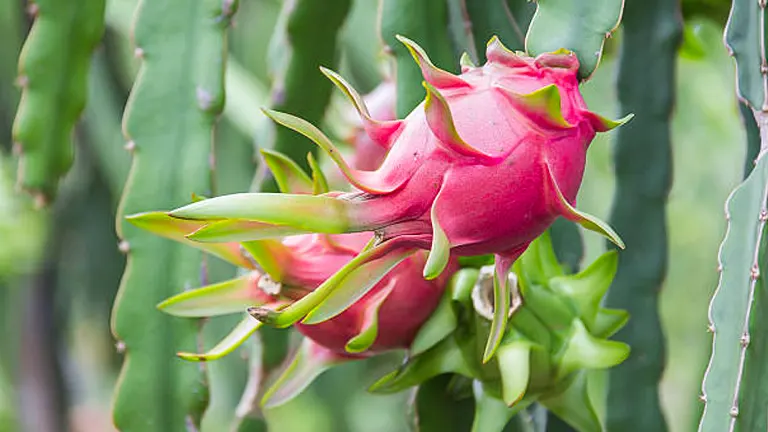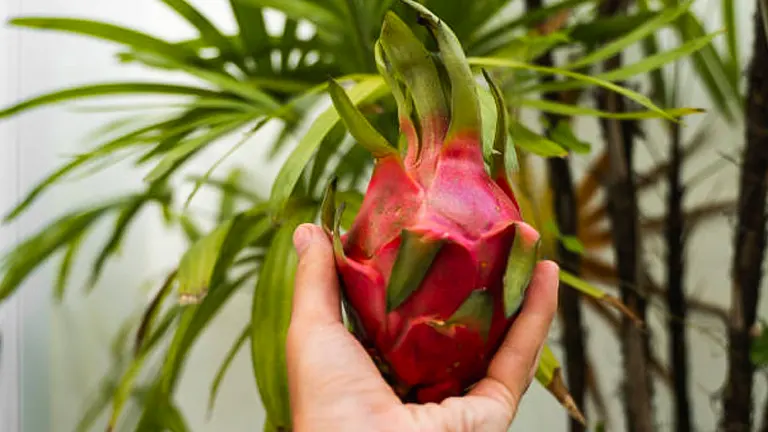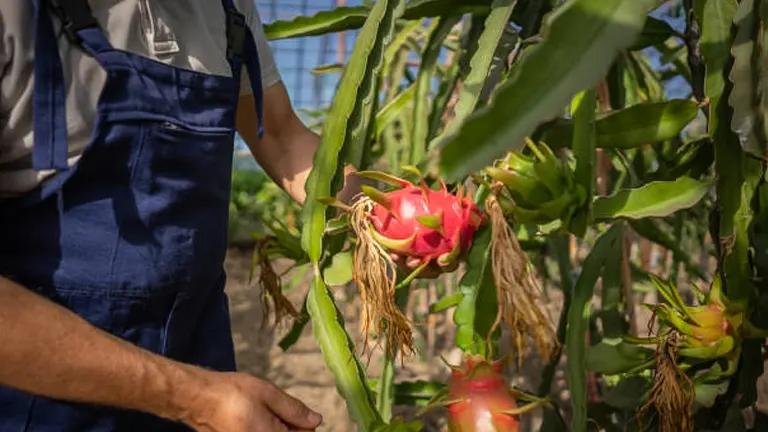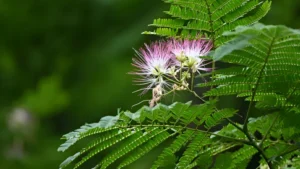How to Fertilize Dragon Fruit: Master the Secrets to Thriving Plants
- May 27, 2024
- 0 comment
Master how to fertilize dragon fruit for maximum growth. Discover essential tips to enhance plant health and productivity. Growing dragon fruit can be both rewarding and challenging, but mastering the right techniques can significantly enhance your success.

In this guide, we’ll explore essential tips on proper watering, effective fertilization, and overall care to ensure your dragon fruit plants thrive. Whether you’re a beginner or an experienced gardener, these insights will help you cultivate lush, healthy dragon fruit with outstanding flavors.
Table of Contents
- Understanding Dragon Fruit
- Nutritional Needs of Dragon Fruit
- Preparing to Fertilize
- Planting and Spacing for Optimal Growth
- Application Techniques
- Safety Measures in Fertilization
- Pruning and Training Techniques
- Monitoring and Adjusting Fertilization
- Long-term Fertilization Strategies
- Watering and Nutritional Needs
- Pest and Disease Management
- Long-term Fertilization and Maintenance Strategies
- Harvesting and Post-Harvest Care
- Troubleshooting Common Issues
- Conclusion
- FAQs
Understanding Dragon Fruit
Botanical Characteristics

Dragon fruit, or Pitaya, belongs to the Cactaceae family, primarily the genus Hylocereus. It is a night-blooming cactus species known for its unique climbing habit, which necessitates structural support such as trellises. The dragon fruit’s vine-like “stems” are succulent, with three prominent ribbed edges that often bear short thorns and aerial roots. These characteristics not only support climbing but also assist in water and nutrient absorption directly from the atmosphere.
Varieties and Genetic Diversity
The most commonly cultivated dragon fruit varieties are:
- Hylocereus undatus (White-fleshed with pink skin)
- Hylocereus costaricensis (Red-fleshed with pink skin)
- Hylocereus megalanthus (White-fleshed with yellow skin)
Each variety presents slight differences in taste, nutritional content, and growing requirements. Recent genomic studies have shown that the genetic diversity within these species affects their tolerance to various climatic conditions and resistance to diseases.
Characteristics of Common Dragon Fruit Varieties
| Variety | Flesh Color | Skin Color | Taste Description | Average Weight per Fruit |
|---|---|---|---|---|
| H. undatus | White | Pink | Mildly sweet, refreshing | 350-500 grams |
| H. costaricensis | Red | Pink | Sweet and slightly tart | 400-600 grams |
| H. megalanthus | White | Yellow | Sweeter and crisper | 250-400 grams |
Optimal Growing Conditions
Soil Requirements Dragon fruit plants thrive in well-draining, sandy loam soils with a neutral to slightly acidic pH (6.0 to 7.0). Proper drainage is crucial to prevent root rot, a common issue in poorly drained soils. Enhancing soil with organic matter can improve moisture retention and provide a slow-release source of nutrients.
Climatic Needs Dragon fruit’s optimal temperature range for growth and fruiting is between 21°C and 29°C (70°F to 85°F). They are sensitive to frost and temperatures below 10°C (50°F) can cause significant damage to the plant. Relative humidity levels between 50% and 70% are ideal, promoting healthy growth without encouraging fungal diseases.
Water and Light Consistent moisture is vital, especially during the flowering and fruiting phases. Drip irrigation is recommended to maintain soil moisture without saturating it. Dragon fruit requires full sunlight for maximum fruit production; however, in areas with intense sun exposure, partial afternoon shade can prevent scorching.
Scientific Insights and Nutritional Analysis
To better understand the specific needs of dragon fruit concerning nutrient uptake and environmental conditions, here’s a detailed table outlining key growth parameters:
| Parameter | Hylocereus undatus | Hylocereus costaricensis | Ideal Conditions |
|---|---|---|---|
| Soil pH | 6.0 – 6.5 | 6.5 – 7.0 | 6.0 – 7.0 |
| Avg. Temp | 21°C – 29°C | 21°C – 29°C | 21°C – 29°C |
| Humidity | 50% – 60% | 60% – 70% | 50% – 70% |
| Light | Full sunlight | Full sunlight | Minimum 6 hours/day |
Nutritional Needs of Dragon Fruit
Essential Nutrients

To thrive and produce optimally, dragon fruit plants demand a balanced intake of nutrients, primarily nitrogen (N), phosphorus (P), and potassium (K):
- Nitrogen helps in the robust growth of leaves and stems, crucial during the early stages of development.
- Phosphorus supports the development of roots and flowers, playing a critical role during the blooming period.
- Potassium is vital for fruit quality and disease resistance, enhancing the overall health and productivity of the plant.
Micronutrients such as iron, magnesium, and calcium also play essential roles, contributing to the structural and physiological stability of the plants.
Importance of Micronutrients
While the primary focus might be on N, P, and K, micronutrients must not be overlooked. These elements aid in crucial processes such as chlorophyll production, enzyme function, and photosynthesis, all of which significantly impact plant health and fruit yield.
Preparing to Fertilize Dragon Fruit
Soil Testing

A comprehensive soil test is the first critical step in preparing to fertilize dragon fruit. This analysis should extend beyond basic pH and nutrient levels to include micronutrient content and soil texture. These factors greatly influence the efficiency of nutrient uptake and the choice of amendments. Ideal soil conditions for dragon fruit are characterized by a pH of 6.0 to 7.0, which maximizes the availability of essential nutrients like phosphorus and iron.
Table of Key Soil Parameters
| Soil Parameter | Ideal Range | Importance |
|---|---|---|
| pH | 6.0 – 7.0 | Ensures optimal nutrient availability and prevents metal toxicity |
| Organic Matter | 2% – 5% | Enhances water retention and nutrient buffering |
| Electrical Conductivity | <1.5 dS/m | Indicates salt levels; important for avoiding root osmotic stress |
Organic vs. Synthetic Fertilizers
Selecting the appropriate fertilizer type is crucial for sustainable growth and fruit production:
- Organic Fertilizers: Such as composted manure or bone meal, not only supply a slow release of nutrients but also improve soil organic matter and microbial activity. These changes enhance the soil structure and long-term fertility.
- Synthetic Fertilizers: Provide quick nutrient availability which is beneficial during rapid growth phases. However, they should be used judiciously to avoid leaching and accumulation of salts in the soil, which can be detrimental to plant health.
Planting and Spacing for Optimal Growth
Strategic Planting Layout

Optimal plant spacing is crucial for maximizing growth and fruit production while minimizing disease risk. Spacing affects not only air circulation and sunlight exposure but also the efficiency of water and nutrient use.
- Medium Density Orchards: Spacing of 2 to 3 meters (6 to 10 feet) between plants and 3 to 4 meters (10 to 13 feet) between rows is recommended. This setup promotes healthier plants by ensuring sufficient sunlight and reducing humidity around the foliage, which is a key factor in preventing fungal infections.
- High Density Farming: Tighter spacing of 1.5 to 2 meters (5 to 6.5 feet) between plants and 2 to 3 meters (6.5 to 10 feet) between rows can significantly increase yield per hectare. This approach, while economically beneficial, requires rigorous management practices to counteract the increased risk of disease transmission and nutrient competition.
Table of Spacing Impact on Growth Metrics
| Spacing Type | Distance Between Plants | Distance Between Rows | Expected Yield Increase | Disease Risk Level |
|---|---|---|---|---|
| Medium Density | 2 – 3 meters | 3 – 4 meters | Moderate | Low |
| High Density | 1.5 – 2 meters | 2 – 3 meters | High | Moderate |
Fertilization Schedule
Effective fertilization is pivotal for supporting vigorous growth and optimal fruit production in dragon fruit. The schedule and composition of fertilizer applications should be meticulously tailored to the plant’s developmental stages:
- Initial Planting Phase: Apply a balanced N-P-K (Nitrogen-Phosphorus-Potassium) fertilizer to encourage robust root development. Early stage fertilization should focus on establishing a strong foundation for future growth.
- Vegetative Growth: Increase nitrogen content slightly to promote foliage and structural growth, which is essential for supporting the weight of the fruit.
- Fruiting Season: Shift the emphasis towards higher potassium and phosphorus content. Potassium is crucial for fruit size and quality, while phosphorus supports strong root development and flower formation.
Scientific Analysis of Nutrient Impact
| Growth Stage | N-P-K Ratio | Application Frequency | Targeted Effect |
|---|---|---|---|
| Initial Planting | 10-10-10 | Once at planting | Root establishment |
| Vegetative | 15-10-15 | Every 2 months | Growth and development |
| Fruiting | 8-12-20 | Every 2-3 months | Fruit size and quality |
Regular applications, adjusted based on soil tests and plant response, ensure that each plant receives optimal nutrition tailored to its growth phase and environmental conditions.
Application Techniques
Effective Methods for Fertilizer Application
The choice of fertilization technique plays a crucial role in nutrient management and the health of dragon fruit plants. Here we delve deeper into the methods and their efficiencies:
- Broadcast Application: This traditional method involves spreading fertilizer evenly across the soil surface. While it covers large areas quickly, it can result in inconsistent nutrient distribution, especially in uneven terrains.
- Drip Irrigation Systems: Drip irrigation is a targeted method where water and dissolved nutrients are delivered directly to the root zone via a network of tubes. This method greatly enhances nutrient uptake efficiency and minimizes losses due to runoff or evaporation.
Comparative Analysis of Application Techniques
| Technique | Nutrient Efficiency | Water Use Efficiency | Suitability |
|---|---|---|---|
| Broadcast | Moderate | Low | Large, flat areas |
| Drip Irrigation | High | High | Precision agriculture |
Safety Measures in Fertilization
Key Precautions
Appropriate fertilization practices are essential not only for plant health but also for environmental sustainability:
- Monitoring and Adjustment: Continuous observation of the plant’s response to fertilization is crucial. Signs of over-fertilization include leaf burn and stunted growth, while under-fertilization is indicated by slow growth and pale leaves. Adjusting fertilizer applications based on these signs helps maintain optimal plant health and prevent nutrient waste.
- Avoiding Nutrient Runoff: Implementing strategies such as buffer zones and proper scheduling can significantly reduce the risk of nutrients leaching into water bodies. This is particularly important in regions prone to heavy rains or where soils are quick to drain.
Scientific Insights into Nutrient Absorption
Understanding the dynamics of nutrient uptake can enhance the efficiency of fertilization methods:
- Nutrient Uptake Rates: Nutrients like nitrogen (N) and potassium (K) are quickly absorbed and utilized by plants, demanding regular replenishment during the growth season. Phosphorus (P), however, is absorbed more slowly and can accumulate in the soil if over-applied.
- Root Zone Delivery Efficiency: Studies have shown that drip irrigation can increase nutrient uptake efficiency by up to 90%, compared to 50-70% for broadcast methods, due to the direct delivery of nutrients to the root zone where they are immediately available to the plant.
Table of Nutrient Absorption Efficiency
| Nutrient | Uptake Efficiency (Broadcast) | Uptake Efficiency (Drip) |
|---|---|---|
| Nitrogen | 50-70% | 85-90% |
| Phosphorus | 20-40% | 60-70% |
| Potassium | 60-80% | 85-95% |
Pruning and Training Techniques
Importance of Training
Dragon fruit plants require support structures like trellises or stakes due to their climbing nature. Proper training ensures that the plants are well-exposed to sunlight, which is crucial for their growth and fruit development.
Pruning Steps
Pruning should be performed to remove dead or excessive growth, which helps to conserve the plant’s energy for producing fruits. The best time to prune is after fruiting has ceased, typically in late winter or early spring:
- Identify and Remove: Target old, non-productive branches and any diseased or damaged parts of the plant.
- Shape the Plant: Encourage a balanced structure that allows light to penetrate all parts of the plant, which is vital for fruit production.
Monitoring and Adjusting Fertilization
Identifying Nutrient Deficiencies
Regular monitoring of plant health is essential. Signs of nutrient deficiencies include:
- Nitrogen deficiency: Yellowing of leaves and stunted growth.
- Phosphorus deficiency: Darker than usual green leaves and weak root systems.
- Potassium deficiency: Browning of leaf edges and poor fruit quality.
Adjusting Fertilization Practices
Based on observations, adjust the fertilization regimen to tackle identified deficiencies. For instance, if signs of potassium deficiency appear, increase the potassium levels in subsequent applications. Always recalibrate based on the plant’s response and environmental conditions.
Long-term Fertilization Strategies
Sustainable Practices
Integrating sustainable practices such as the use of organic compost not only improves soil fertility over time but also enhances the biological activity within the soil, which benefits overall plant health.
Soil Health Management
Maintain soil health through regular amendments and avoid the buildup of harmful salts from synthetic fertilizers by incorporating periodic flushing with water and alternating between organic and synthetic fertilizers.
Watering and Nutritional Needs
Watering Requirements

Dragon fruit plants are sensitive to moisture levels, requiring precise watering to thrive. They need consistent watering to establish a robust root system and ensure fruit development, particularly in hotter climates where evaporation rates are high. However, overwatering can lead to root rot, a common issue with cacti. The soil should be allowed to dry to a depth of about 2 inches between watering sessions. During the peak growing season, a deep watering once a week is usually sufficient, ensuring that the water reaches the roots without leaving the soil waterlogged. In cooler months or during rainy seasons, reduce the watering frequency to prevent excess moisture buildup.
Fertilization Techniques
The health and productivity of dragon fruit significantly depend on the correct balance of nutrients. Using a balanced, slow-release fertilizer with an N-P-K ratio of 10-10-10 ensures that the plant receives equal parts nitrogen, phosphorus, and potassium. Apply a moderate dose of this fertilizer every month during the growing season to support vigorous growth and fruiting. As the plant matures and enters more stable growth phases, reduce the frequency of fertilization to every other month. An annual application of rich organic compost not only improves soil structure but also increases its nutrient-holding capacity, benefiting overall plant health.
Addressing Nutritional Deficiencies
Nutrient deficiencies can manifest visibly on dragon fruit plants and affect their overall health and productivity. For instance, nitrogen deficiency typically results in yellowing leaves, while phosphorus deficiency can cause leaves to develop dark or purple spots. Regular monitoring of leaf color and texture helps in early detection of such issues. Adjusting your fertilization strategy based on visual symptoms is crucial, and periodic soil testing can provide a detailed analysis of nutrient levels, guiding precise adjustments to fertilization practices.
Scientific Table of Watering and Fertilization Parameters:
| Parameter | Ideal Specification | Impact on Plant | Recommended Practice |
|---|---|---|---|
| Watering Depth | 2 inches dry between sessions | Prevents root rot, ensures adequate moisture for growth | Check soil moisture at root level before watering |
| Fertilization Ratio (N-P-K) | 10-10-10 | Balanced growth and fruit development | Monthly application during growth, reduce in off-season |
| Organic Compost Application | Annually | Improves soil structure and nutrient availability | Apply at the start of the growing season |
| Nutrient Deficiency Signs | Yellowing or dark spots on leaves | Indicates specific nutrient shortages | Adjust fertilizer type or schedule based on symptoms |
Pest and Disease Management
Dragon fruit plants, while robust, are not immune to pest infestations and diseases which can impede their growth and fruit production.
Common Pests:
- Mealybugs and scale insects can often be found sucking on the sap of the plants, weakening them. These pests can be controlled using neem oil or insecticidal soap.
- Ants may also be a problem as they farm mealybugs for their secretions. Managing ants involves keeping the area around the plants clean and using ant baits strategically.
Diseases:
- Stem rot is a frequent issue, particularly if the plants are overwatered or if humidity is excessively high. Good drainage and proper air circulation are crucial for prevention.
- Fungal infections, such as anthracnose, can cause dark lesions on the fruit and flowers. Fungicidal sprays can be applied as a preventative measure during humid or rainy seasons.
Preventative Care: Regular inspections of your dragon fruit plants are essential to catch and address issues early. Implementing an integrated pest management (IPM) strategy that includes both cultural and chemical control methods can effectively reduce pest and disease incidence.
Long-term Fertilization and Maintenance Strategies
Rotating Fertilizers
To prevent soil degradation and nutrient imbalances, it’s advantageous to rotate between different types of fertilizers. For example, alternating organic compost with controlled-release chemical fertilizers can provide balanced nutrition while maintaining soil health.
Periodic Soil Reassessment
Re-evaluating soil conditions annually through testing helps to adjust the fertilization plan as needed. This practice ensures that the fertilization strategy continues to align with the changing soil properties and the specific needs of the dragon fruit plants as they mature.
Harvesting and Post-Harvest Care
When to Harvest:

- Dragon fruit typically matures about 30 to 50 days after flowering. The skin color changes from bright green to red or yellow, depending on the variety, indicating ripeness.
- The fruit should feel slightly soft to the touch, similar to a ripe kiwi or avocado. Overripe fruits may become overly mushy and lose their flavor.
Harvesting Techniques:
- Use a sharp knife or pruning shears to cut the fruit stem close to the branch, leaving a small piece of the stem attached to protect the fruit from rapid decay.
- Handle the fruits gently to avoid bruising, which can lead to quicker spoilage.
Post-Harvest Care:
- Store harvested dragon fruit at room temperature if consuming within a few days, or refrigerate to extend freshness for up to two weeks.
- Avoid storing fruits in direct sunlight or in tightly sealed containers, which can accelerate spoilage.
Troubleshooting Common Issues
Despite best efforts, you may encounter issues with your dragon fruit plants. Here’s how to diagnose and respond to some common problems:
Poor Fruiting:
- Cause: Insufficient pollination, nutrient deficiencies, or inadequate sunlight.
- Solution: Hand pollinate flowers, adjust fertilization regimen, and ensure plants receive enough light.
Plant Diseases:
- Cause: Overwatering, poor air circulation, or fungal infections.
- Solution: Improve drainage, increase air flow around plants, and use appropriate fungicides.
Structural Problems:
- Cause: Weak support structures or overcrowded growing conditions.
- Solution: Strengthen or replace supports, prune to manage growth, and ensure adequate space between plants.
Related Post
- How to Build a Barn: A Step-by-Step Guide for Beginners
- How to Build a Sustainable Compost Bin: Easy and Eco-Friendly DIY
- How to Fertilize Bougainvillea: A Complete Guide for Stunning Blooms
- How to Fertilize Apple Trees: Essential Tips for a Bountiful Harvest
- How to Fertilize Lemon Trees: Secrets for Thriving Citrus
- How to Fertilize Avocado Tree: A Step-by-Step Guide for Lush Growth
- 10 Best Bow Saws to Buy in 2024: Top Picks for the Money
- Best Miter Saw For Beginners
- Top 10 Pruning Saws to Buy in 2024: Best for the Money
- 7 Best Pocket Chainsaw
Conclusion
Fertilizing dragon fruit effectively requires an understanding of the plant’s nutritional needs and careful management of soil conditions. From choosing the right type of fertilizer to implementing a strategic application schedule, each step plays a crucial role in the health and productivity of your dragon fruit plants. Successful dragon fruit cultivation does not end with applying the right nutrients; it demands ongoing observation, learning, and adaptation to environmental changes and plant responses. Engaging with local agricultural extensions or horticultural societies can provide additional resources and support.
FAQs
- What is the best time of year to start fertilizing dragon fruit plants?
Begin fertilizing dragon fruit plants at the start of their active growth period in early spring. This ensures that nutrients are available when the plants are ready to grow rapidly and start setting fruits. - How often should I fertilize young dragon fruit plants compared to mature ones?
Young dragon fruit plants benefit from more frequent, lighter applications of fertilizer to support their rapid growth and establishment—typically every 2 to 3 months. Mature plants, especially during the fruiting phase, can be fertilized less frequently, every 3 to 4 months, with a higher concentration of potassium to enhance fruit quality. - Can I use the same type of fertilizer throughout the growing season?
It’s advisable to adjust the type of fertilizer based on the plant’s growth stage. Use a balanced N-P-K fertilizer during the initial growth phase, and switch to a fertilizer with higher potassium and phosphorus content during the flowering and fruiting stages to support fruit development and overall health. - What signs indicate that my dragon fruit plant is over-fertilized?
Signs of over-fertilization include salt buildup on the soil surface, yellowing and wilting of lower leaves, and stunted growth. If you notice these signs, reduce the frequency and amount of fertilizer application and consider flushing the soil with water to remove excess salts. - How does the spacing of dragon fruit plants affect fertilization?
Spacing affects how nutrients are absorbed and utilized by each plant. Closer spacing in high-density settings may require more precise and possibly more frequent fertilization to prevent competition for nutrients and to ensure each plant receives its necessary share. - What’s the role of micronutrients in fertilizing dragon fruit plants?
While nitrogen, phosphorus, and potassium are crucial, micronutrients like magnesium, zinc, and iron play vital roles in photosynthesis, enzyme function, and overall plant health. A lack of micronutrients can lead to poor growth and fruit quality, making it important to use a micronutrient-rich fertilizer or supplement as needed based on soil tests. - Is organic fertilizer better than synthetic for dragon fruit plants?
Organic fertilizers release nutrients slowly, improve soil structure, and enhance microbial activity, which benefits long-term soil health and plant growth. Synthetic fertilizers provide nutrients more quickly but can lead to nutrient runoff and soil degradation if not used carefully. The choice depends on your cultivation goals, environmental considerations, and management practices. - How should I apply fertilizer to avoid damaging my dragon fruit plants?
Apply fertilizers around the base of the plant, away from the stem and roots, to prevent direct contact which can cause root burn. Using a drip irrigation system or diluting granular fertilizers in water can help distribute nutrients evenly and safely.
With these insights and techniques at your disposal, you’re now equipped to optimize the fertilization of your dragon fruit plants, ensuring they grow vigorously and produce bountiful, quality fruits. Happy gardening!

Benjamin Brooks
Forestry AuthorGreetings! I'm Benjamin Brooks, and my journey over the past 15 years has revolved around the fascinating realms of content creation, expertise in snow clearing, and the intricate world of lumberjacking and landscaping. What began as a simple curiosity about the natural world and heavy machinery has evolved into a passionate profession where my love for crafting words intertwines seamlessly with my lumberjacking and garden skills.













Leave your comment